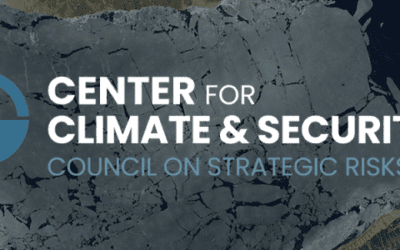from The Strategic Foresight Book by IFRC Solferino Academy…Effective strategic foresight is an ongoing process. Developing the ability to monitor trends, understand how they interact and influence each other, and imagining
how they might develop over time, is a powerful addition to our strategy design and decision making. Foresight should also be deeply participatory, drawing on our
connections to communities all around the world to ensure that the projects, plans and organisation we aspire to be reflects their hopes for the future.
The impossible math of philanthropy
by Hans Taparia and Bruce Buchanan in The New York Times…With one hand they generate supernormal profits by plundering society, and with the other they dole out a few crumbs to “save the world.” But they never will. The math simply doesn’t work.
Resilience revisited 011: Resilience as ‘capacity to embrace uncertainty’
by Tamzin Ractliffe on LinkedIn…Perhaps true resilience emerges when we stop asking “How certain are we?” and start asking “How adaptively can we respond?”
What should philanthropy do about the US freeze on aid?
by Benjamin Bellegy in Alliance Magazine…We can worry that some philanthropies might reorientate their giving to align with the new zeitgeist, for instance divesting from issues such as climate or social justice.
An emerging third option: Reclaiming democracy from dark money & dark tech
by Otto Scharmer in Medium…In short — the key to the profound changes that our current polycrisis is calling for lies in the cultivation of the social soil. Every one of us can be (and is) a gardener or farmer of that soil. In our forthcoming book Presencing we outline the core practices for doing so.
Yuen Yuen Ang argues that we need a fundamentally different way of thinking about our biggest global problems
by Yuen Yuen Ang in Interest.co.nz…The polycrisis is paralyzing only for those who are attached to the old order. For those who are not, it offers what I would call a “polytunity” to usher in new paradigms that invert the way we think about the development process, the sources of solutions, and the role of the state.
A ‘second tree of life’ could wreak havoc, scientists warn
by Carl Zimmer in The New York Times…Research on so-called mirror cells, which defy fundamental properties of living organisms, should be prohibited as too dangerous, biologists said.
The hunger gap
by George Monbiot in his blog…A gulf in public understanding prevents us from seeing how and why our food supply is at risk.
Climate models can’t explain what’s happening to Earth
by Zoë Schlanger in The Atlantic…Global warming is moving faster than the best models can keep a handle on.
Leadership in the polycrisis: How UK defense training can help us navigate a future of unprecedented environmental disruption
by Laurie Laybourn and Matt Ince in the Center for Climate and Security…Explicit investments in the development of emerging as well as current leaders must be considered a core element of building resilience within the context of the deepening climate and ecological crisis. Better leadership—at all levels—will support decision advantage under more challenging conditions. A failure to make these investments in leaders is likely to significantly undermine the effectiveness of societies to handle growing systemic risks and, in turn, to ensure that collective sustainability efforts meet the critical threshold needed to avoid catastrophic runaway environmental change.





